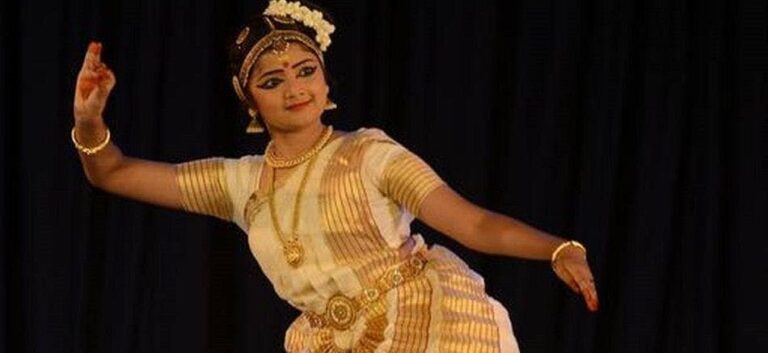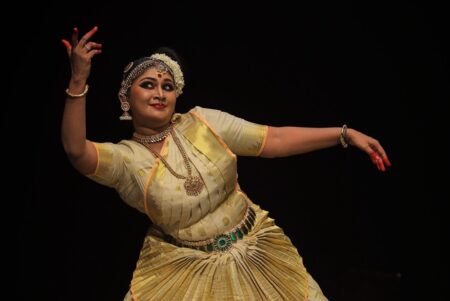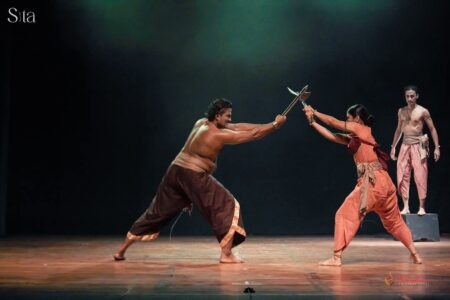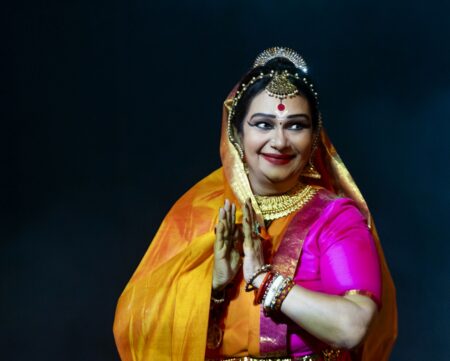The Lasya and Tandava traditions are deeply intertwined with the legends of Siva and Parvathi and the occult knowledge of the Tantra tradition.
We find Mohini in several other stories from the Puranas. The oft-quoted one is the Mohini from the story of churning the ocean of milk by devas and asuras. The celestial beings – devas and the dwellers of the underworld – asuras, churned the ocean of milk to discover the nectar of immortality – Amrutha. The asuras, with their innate tricks, escaped with Amrutha as soon as it was churned out. Lord Mahavishnu went into the asuras’ camp disguised as Mohini, the enchantress, and recovered Amrutha for devas.
One interpretation of this story is that the Lord Mahavishnu as Mohini was in a state of co-existence with Adi Parashakti – the female goddess. It is one of the four stages of existence of a devotee -– Salokya (in the same world as the divine), Samipya (in the presence of the divine), Sarupya (in the same form as the divine) and Sayujya (state of liberation).
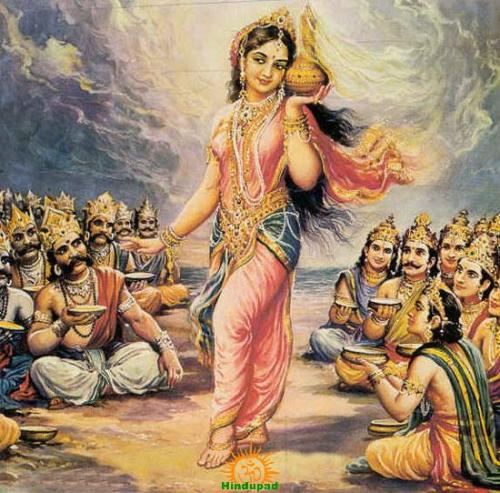
In this interpretation, one places the female goddess at a higher pedestal than Lord Vishnu. The female goddess was worshipped in Kerala well before Hinduism in its current-day form came into existence. Many ancient temples of Kerala including the famous Kodungallur temple worship the ‘Amma’ goddess as the supreme being.
Bhairavi who dances with the Bhiarava is one of the forms of this female goddess, others being Rudrarchika, Rudrachandi, Nateswari, Sidhachamundika, Sidhayogeshwari, Rupavidya, Rudrachamundika. These names refer to the goddess in different states of emotion.
While the bhairavi form exists with the predominant emotion of Sringara expressed as a Lasya dance, some of the others are violent forms, often to wreck vengeance on the asuras. At other times, she exists as Anandabhairavi who showers her blessings on her devotees.
Siva and Shakti in Mohiniyattam
Mohiniyattam is the epitome of the Lasya dance tradition of India. The Lasya and Tandava traditions are deeply intertwined with the legends of Siva and Parvathi and the occult knowledge of the Tantra tradition. In the Siva Purana, Parvathi entices Siva as a Mohini. In this form, she is known as Nateswari or the goddess of dance. She is an enchantress and her dance is Lasya replete with feminine charm and beauty. Her duty is to entice Siva for the sake of creation.
Sankaracharya’s Soundarya Lahari describe the ecstatic dance of creation as follows:
tavadhare mule saha samayaya lasya paraya
navatmanam manye navarasa maha tandava natam
ubhabhyam etabhyam udayavidham uddisya dayaya
sanathabhyam jajne janakajananimaj jagad idam
“I meditate on the Siva and Parvathi who are performing Tandava and Lasya in the union in the process of procreation at the Mooladhara chakra and hence take the roles of father and mother of this universe.”
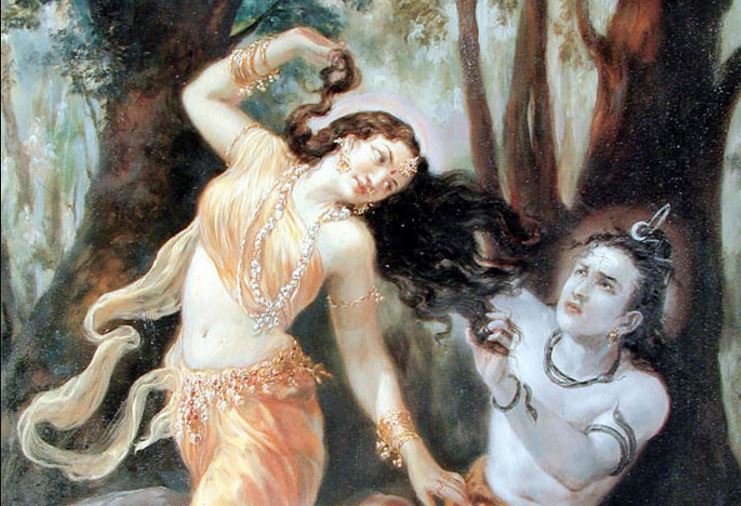
The meditative emotion of Shanta is considered as a merger of all the other eight rasas. According to the Tantric tradition, Moksha (characterised by Shanta rasa) is attained as one elevates oneself through the seven Chakras and transcends the Sahasrara chakra to merge with the penultimate truth.
This sloka refers to the Mooladhara chakra, the first chakra characterised by passion, vitality and worldly attachment. Hence, all emotions, the navarasas appear in Siva’s dance with the king of rasas Sringara dominating Siva and Parvathi’s dance. Like the seven chakras, there are seven distinct dances in a traditional Mohiniyattam repertoire. So, we would like to draw some parallels between the two. Sankaracharya depicts Siva and Parvati dancing in tandem.
Cholkkettu-the invocative dance
Now let’s look at the first item of a traditional Mohiniyattam repertoire – the Cholkkettu. While the traditional repertoire of Mohiniyattam may have lost several components over the centuries, the Cholkettu has survived the test of time. It is the first invocative dance of a traditional repertoire. The sloka danced as part of the traditional Cholkettu is:
Ananda nritta samaye, natanayakasya
Padaravinda maninoopurasincitaneem
Anandayanti, madayanti, vimohayanti,
Romancayanti, nayanani krutharthayanti
When Siva dances with Samaya devi, wearing the beautifully sounding anklets on their lotus feet, it delights us, inebriates us, entrances us to a state of oblivion and watching this our eyes are gratified. One would be amazed by the similarities we can see here. The invocative dance is the invocative meditation at the mooladhara chakra. In the Soundarya Lahari one can find Siva and Parvati – the purusha and the prakrithi, and an observer who bows down to them on the theatre stage set by the Universe.
In the Cholkettu sloka, the dancer enacts Siva and Parvati on a real dance stage in front of an audience. While the jeevathma seeks Moksha, an equivalent emotion of rasanubhuti is what motivates the audience of the dance performance. Creating an ambience for this and slowly elevating the audience through the dramatic experience unto a point of the penultimate rasanubhava is the dharma of a dancer.
Read Part 1
(Assisted by Sreekanth Janardhanan)

